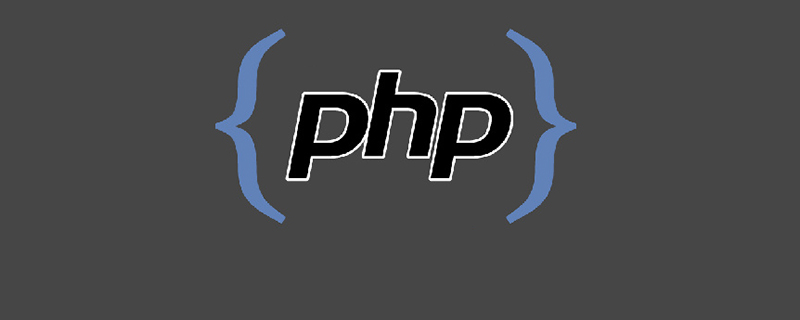
下面我們講下反射在實際開發中的應用。
- 自動產生文件
- 實作MVC 架構
- 實作單元測試
- 配合DI 容器解決依賴
- …
自動產生文件
根據反射的分析類,接口,函數和方法的內部結構,方法和函數的參數,以及類的屬性和方法,可以自動產生文件。
/**
* 学生类
*
* 描述信息
*/
class Student
{
const NORMAL = 1;
const FORBIDDEN = 2;
/**
* 用户ID
* @var 类型
*/
public $id;
/**
* 获取id
* @return int
*/
public function getId()
{
return $this->id;
}
public function setId($id = 1)
{
$this->id = $id;
}
}
$ref = new ReflectionClass('Student');
$doc = $ref->getDocComment();
echo $ref->getName() . ':' . getComment($ref) , "\n";
echo "属性列表:\n";
printf("%-15s%-10s%-40s\n", 'Name', 'Access', 'Comment');
$attr = $ref->getProperties();
foreach ($attr as $row) {
printf("%-15s%-10s%-40s\n", $row->getName(), getAccess($row), getComment($row));
}
echo "常量列表:\n";
printf("%-15s%-10s\n", 'Name', 'Value');
$const = $ref->getConstants();
foreach ($const as $key => $val) {
printf("%-15s%-10s\n", $key, $val);
}
echo "\n\n";
echo "方法列表\n";
printf("%-15s%-10s%-30s%-40s\n", 'Name', 'Access', 'Params', 'Comment');
$methods = $ref->getMethods();
foreach ($methods as $row) {
printf("%-15s%-10s%-30s%-40s\n", $row->getName(), getAccess($row), getParams($row), getComment($row));
}
// 获取权限
function getAccess($method)
{
if ($method->isPublic()) {
return 'Public';
}
if ($method->isProtected()) {
return 'Protected';
}
if ($method->isPrivate()) {
return 'Private';
}
}
// 获取方法参数信息
function getParams($method)
{
$str = '';
$parameters = $method->getParameters();
foreach ($parameters as $row) {
$str .= $row->getName() . ',';
if ($row->isDefaultValueAvailable()) {
$str .= "Default: {$row->getDefaultValue()}";
}
}
return $str ? $str : '';
}
// 获取注释
function getComment($var)
{
$comment = $var->getDocComment();
// 简单的获取了第一行的信息,这里可以自行扩展
preg_match('/\* (.*) *?/', $comment, $res);
return isset($res[1]) ? $res[1] : '';
}執行 php file.php 就可以看到對應的文件資訊。
實作MVC 架構
現在好多框架都是MVC 的架構,根據路由資訊定位控制器($controller) 和方法($method) 的名稱,之後使用反射實現自動呼叫。
$class = new ReflectionClass(ucfirst($controller) . 'Controller');
$controller = $class->newInstance();
if ($class->hasMethod($method)) {
$method = $class->getMethod($method);
$method->invokeArgs($controller, $arguments);
} else {
throw new Exception("{$controller} controller method {$method} not exists!");
}
實現單元測試
一般情況下我們會對函數和類別進行測試,判斷其是否能夠按我們預期返回結果,我們可以用反射實作一個簡單通用的類別測試案例。
class Calc
{
public function plus($a, $b)
{
return $a + $b;
}
public function minus($a, $b)
{
return $a - $b;
}
}
function testEqual($method, $assert, $data)
{
$arr = explode('@', $method);
$class = $arr[0];
$method = $arr[1];
$ref = new ReflectionClass($class);
if ($ref->hasMethod($method)) {
$method = $ref->getMethod($method);
$res = $method->invokeArgs(new $class, $data);
var_dump($res === $assert);
}
}
testEqual('Calc@plus', 3, [1, 2]);
testEqual('Calc@minus', -1, [1, 2]);這是類別的測試方法,也可以利用反射實現函數的測試方法。
這裡只是我簡單寫的一個測試案例,PHPUnit 單元測試框架很大程度上依賴了 Reflection 的特性,可以了解下。
配合DI 容器解決依賴
Laravel 等許多框架都是使用Reflection 解決依賴注入問題,具體可查看Laravel 原始碼進行分析。
下面我們程式碼簡單實作一個 DI 容器示範 Reflection 解決依賴注入問題。
class DI
{
protected static $data = [];
public function __set($k, $v)
{
self::$data[$k] = $v;
}
public function __get($k)
{
return $this->bulid(self::$data[$k]);
}
// 获取实例
public function bulid($className)
{
// 如果是匿名函数,直接执行,并返回结果
if ($className instanceof Closure) {
return $className($this);
}
// 已经是实例化对象的话,直接返回
if(is_object($className)) {
return $className;
}
// 如果是类的话,使用反射加载
$ref = new ReflectionClass($className);
// 监测类是否可实例化
if (!$ref->isInstantiable()) {
throw new Exception('class' . $className . ' not find');
}
// 获取构造函数
$construtor = $ref->getConstructor();
// 无构造函数,直接实例化返回
if (is_null($construtor)) {
return new $className;
}
// 获取构造函数参数
$params = $construtor->getParameters();
// 解析构造函数
$dependencies = $this->getDependecies($params);
// 创建新实例
return $ref->newInstanceArgs($dependencies);
}
// 分析参数,如果参数中出现依赖类,递归实例化
public function getDependecies($params)
{
$data = [];
foreach($params as $param)
{
$tmp = $param->getClass();
if (is_null($tmp)) {
$data[] = $this->setDefault($param);
} else {
$data[] = $this->bulid($tmp->name);
}
}
return $data;
}
// 设置默认值
public function setDefault($param)
{
if ($param->isDefaultValueAvailable()) {
return $param->getDefaultValue();
}
throw new Exception('no default value!');
}
}
class Demo
{
public function __construct(Calc $calc)
{
echo $calc->plus(1, 2);
}
}
$di = new DI();
$di->calc = 'Calc'; // 加载单元测试用例中 Calc 类
$di->demo = 'Demo';
$di->demo;注意上面的calc 和demo 的順序,不能顛倒,不然的話會報錯,原因是由於Demo 依賴Calc ,首先要定義依賴關係。
在Demo 實例化的時候,會用到Calc 類,也就是說Demo 依賴Calc,但是在$data 上面找不到的話,會拋出錯誤,所以首先要定義 $di->calc = 'Calc'。
Reflection 是一個非常 Cool 的功能,使用它,但不要濫用它。
End
堅持原始技術分享,您的支持將鼓勵我繼續推薦教學:《php教學》


























